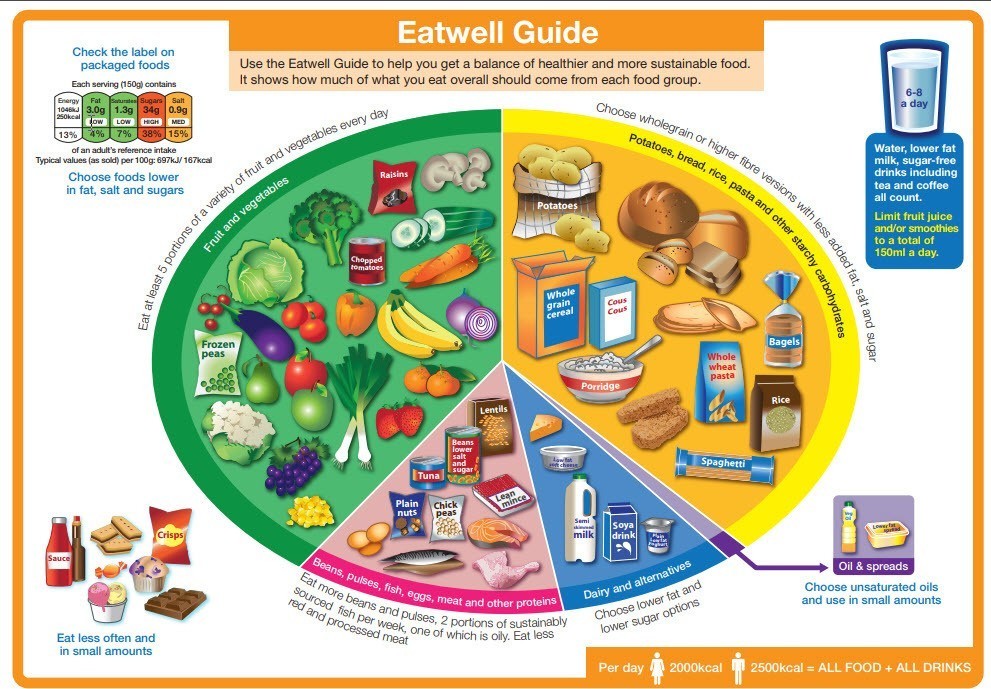Milk and dairy foods are some of the most nutrient-packed foods available to us in our diets today and are as ancient as civilisation itself. In fact, historical evidence suggests that dairy products from animals have been consumed by humans from as early as 4000 BC.
More...
Dairy foods and nutrient richness
Foods that, per calorie, provide plenty of the right nutrients to keep the body fit and functioning properly are said to be nutrient rich.
Many dairy products fall into this category because they contain protein, carbohydrates and fats - the energy providers - as well as essential vitamins and minerals.
That impressive combination has an important role to play when consumed as part of a healthy balanced diet Calcium, for instance, with which milk is primarily associated, is vital for building and maintaining strong bones and teeth, and phosphorus is needed to maintain a normal energy metabolism.
The protein found in dairy foods contains amino acids that help to build and repair body tissues, and vitamin B12 helps to form red blood cells.
How much?
The Food Standards Agency suggests (via its diagram of the 'Eatwell plate') that a balanced diet should consist of about a third starchy foods, such as wholegrain bread, pasta and rice, and a third fruit and vegetables with the remaining third made up from milk and dairy foods, meat, fish or alternatives and as little as possible fatty and sugary foods.
Even if you don't keep to these proportions every day but balance them out over a week, you won't be going far wrong.
Just how much of any nutrient should be taken each day depends mainly on age, gender, general health and lifestyle, so it's impossible to list a definitive amount of each one that will be right for everybody all the time.

However, Recommended Daily Allowances (RDAs) referred to on many labels provide a good guide, and the Department of Health's Reference Nutrient Intake (RNI) figures give further general guidance, setting down an amount for each of the main nutrients that covers the needs of most people.
For a complete list of the RNIs for calcium, please visit the Dairy Council's website (www.milk.co.uk).
The RNI for calcium is 700mg per day for an adult and, following The Dairy Council's recommended three portions a day regime, this can be made up from a 200ml glass of semi-skimmed milk (247mg), I50g pot of low-fat yogurt (243mg) and a 30g piece (matchbox size) of hard cheese (222mg).
Milk, yogurt and cheese are the most popular dairy foods in the UK, and usually available in whole, low-fat and fat-free varieties.
Milk is suitable for all age groups, from the very young to the very old. Its diverse variety of nutrients and their importance within the body are indicated by the glass-of-milk illustration above. As well as the vitamins and minerals shown, milk contains thiamine, niacin, folate and iodine, plus smaller amounts of several other essential nutrients.
When substances are described as 'essential', it means that the body is unable to manufacture those nutrients for itself, so it's important to eat food that contains them. One quick and easy way is to drink milk!
Sterilisation is the removal of living micro-organisms, and can be achieved by moist heat, dry heat, filtration, irradiation, or by chemical methods.
Compared to pasteurisation, a heat treatment of over 100°C is applied for a period long enough to lead to a stable product shelf-life.
Varieties of milk
Pasteurised milks
Whole milk: milk with a minimum fat content of 3.5 grams of fat per 100 g of product
Semi-skimmed milk: milk with a fat content between 1.5 and 1.8 grams per 100 g of product
Skimmed milk: milk with a fat content which does not exceed 0.3 grams per 100 g of product
1% milk: milk with a fat content of 1g per 100 g of product
UHT milk: milk which has been heated at such high temperatures that all potentially harmful bacteria are killed. This particular heat-treatment produces longer shelf-life milk compared to conventional milk
Filtered milk: milk which undergoes a filtration process (in addition to the usual steps of milk processing) to remove further souring bacteria, therefore the shelf-life is increased
Flavoured milk: milk which has been sweetened and flavoured (e.g. chocolate and strawberry milk). Many flavoured milks are made from low-fat varieties (semiskimmed or 1%).
As a result of being sweetened they have a higher sugar content but still provide a vast array of beneficial nutrients and are a source of calcium, potassium, vitamin B2 and phosphorus
Raw milk
Raw milk is milk that has not been heat-treated. The nutritional value of raw milk is not significantly different to pasteurised or heat-treated milk but it may contain pathogens which could be harmful to health.
Sales of raw milk are banned in Scotland and limited in England, Wales and Northern Ireland due to their links with food poisoning.
Lactose Intolerance
Lactose intolerance is a condition where someone has a reduced ability to digest the sugar found in milk and dairy foods (lactose) due to a deficiency of lactase, an enzyme which breaks down lactose.
Most people who have this condition can tolerate small amounts of lactose so there is no need to avoid dairy completely. Some dairy foods, such as cheese and yogurt, contain only small amounts of lactose.
Cow’s milk protein allergy
Cow’s milk protein allergy is very different to lactose intolerance. It is a response of the immune system to the protein contained in cow’s milk. This type of allergy is not common but is more prevalent in young children.
However, children usually grow out of the condition and can enjoy dairy foods as adults. Consult a registered dietitian for advice.
Lactose intolerance and cow’s milk allergy are two completely different conditions that require different management
Are hormones or antibiotics added to cow’s milk?
In the UK hormones are not added to milk or to the diet of dairy cows to enhance their milk production. Natural hormones can be found in a wide range of foods and are present in both plant and animal based foods that we consume.
Milk is rigorously tested for traces of antibiotics under European law to ensure that food is safe for consumption. Cows receiving antibiotics are milked separately from the rest of the herd to ensure that the milk is discarded and does not enter the food supply.
What are the nutritional differences between organic and conventional milk?
There are no significant differences between organic milk and conventional milk in terms of quality, safety and nutrition. Consumers, however, may choose to purchase organic milk for reasons of personal preference.
The general principles of organic food production involve avoiding pesticides and fertilizers, using crop rotation to maintain soil fertility and using only a limited number of approved products and substances where necessary in the processing of organic food.
Does consuming milk cause heart disease?
Saturated fats have been associated with increased risk of developing heart disease. Milk and dairy foods make a contribution to saturated fat intake in the UK diet.
Recent health research has suggested that the issues concerning saturated fat are more complex than the simple message of ‘saturated fats are bad’. In fact, the evidence actually suggests a protective effect of milk consumption on risk of developing heart disease.
This may also be due to other beneficial nutrients contained in milk (e.g. calcium).
How milk is made and transported
The first key players in milk production are, of course, the cows. They are milked twice a day and the average UK dairy farm produces 2,000 litres of milk daily!
The milk is then stored in tanks at 4ºC and is transported to the dairy for processing.
Here, the milk is:
1. Pasteurised: the milk is heated up very quickly and cooled down again. This process ensures that harmful bacteria are reduced in number so that 1. they do not constitute a health risk.
2. Separated: the milk is separated into its cream component (rich in fat) and liquid component.
3. Standardised: the cream and liquid component are re-blended so that the milk contains the exact amount of fat required depending on whether it is to be consumed as whole, semi-skimmed or skimmed.
Lower-fat options tend to have less vitamin A and vitamin E than whole milk, but have more minerals such as calcium, potassium and phosphorus.
4. Homogenised: milk contains fat globules of different sizes. This means that, if left to set, the larger globules would make their way to the top and form a cream layer.
Homogenisation is a process where the milk is pushed through a hole with such pressure that the larger fat globules are broken down and dispersed within the milk.
This gives milk an even, more palatable consistency.
Alternative methods of sterilisation
UHT (Ultra-high temperature sterilisation) has a heat treatment of over 100°C during very short times; it is especially applicable to low viscous liquid products.
Direct UHT treatment means a very short heat treatment at temperature of approximately 140°C (135 -150˚C) for only a few seconds. Generally in a plate or tubular heat-exchanger. This results in a sterilised product with minimal heat damage to the product properties.
UHT treatment is only possible in flow-through equipment. The product is thus sterilised before it is transferred to pre-sterilised containers in a sterile atmosphere. This requires aseptic processing. This is why UHT processing is also called aseptic processing.
For UHT treatment, indirect heating in plate and frame or tubular heat exchangers is applied. However, direct steam injection or steam infusion may also be applied.
Indirect UHT method
In many cases, products must not only be attractive and healthy to eat and drink, but also economical to manufacture, store and distribute.
The most cost-effective method of UHT processing is indirect heating – a heating method in which the processed product never comes into direct contact with the heating medium. There is always a wall in between. This technique applies to all types of heat exchangers.
In the indirect systems the heat is transferred from the heating media to the product through a partition (plate or tubular wall). The indirect systems can be based on:
• Plate heat exchangers
• Tubular heat exchangers
• Scraped surface heat exchangers
Indirect UHT plants are a suitable choice for processing of milk, flavoured milk products, cream, dairy desserts, yogurt drinks and other non-dairy applications, such as juices, nectars and tea.
Indirect UHT plant method is based on plate heat exchangers
This process solution is appropriate for products such as coffee cream and evaporated concentrated milk.
Pulsating electric field - Principle
Pulsed electric field in order to kill micro-organisms has long been known. For some time the application has been expensive compared to other techniques, but the application may be interesting for some products.
Advantages are that the food product to be treated does not change in chemical and physical properties, hardly increases in temperature, little water and energy is required and far less cleaning (compared to UHT).


